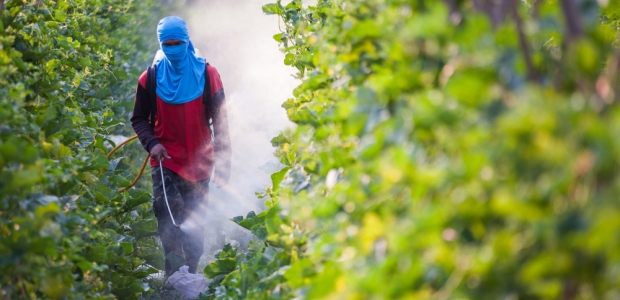
Study Finds 2,600 Acute Pesticide Exposure Cases 2007-2011
While 80 percent of cases were classified as low severity, 18 percent were moderate severity, and 1 percent were high severity. Two workers died.
A study published recently in CDC's MMWR estimates that 2,606 cases of acute occupational pesticide-related illness and injury were identified in 12 states (California, Florida, Iowa, Louisiana, Michigan, Nebraska, North Carolina, New Mexico, New York, Oregon, Texas, and Washington) during 2007-2011, with rates for agricultural industry workers (18.6/100,000) being 37 times greater than rates for non-agricultural workers (0.5/100,000) and the highest rates in Washington.
The study, "Acute Occupational Pesticide-Related Illness and Injury — United States, 2007–2011," was posted Oct. 14 and conducted by Dr. Geoffrey M. Calvert, M.D., of the NIOSH Division of Surveillance, Hazard Evaluations, and Field Studies, and several colleagues from the California Department of Public Health, Washington State Department of Health, Texas Department of State Health Services, Michigan Department of Health and Human Services, Florida Department of Health, Iowa Department of Public Health, North Carolina Department of Health and Human Services, Louisiana Department of Health and Hospitals, Oregon Health Authority, Nebraska Department of Health and Human Services, and New Mexico Department of Health.
In 2007, the year with the most currently available data, an estimated 2.1 billion pounds of conventional pesticides were used in the United States, a number that represents approximately 22 percent of the entire worldwide use of those pesticides, according to the study, which said conventional pesticides include insecticides, insect repellents, herbicides, fungicides, and fumigants and exclude chlorine, hypochlorites, and other biocides.
They found that most affected persons were exposed to insecticides or herbicides and, among persons exposed to insecticides, the chemical classes most often involved were pyrethroids, organophosphates, sulfur compounds, and pyrethrins; among persons exposed to herbicides, the specific herbicides most commonly involved were glyphosate and the dipyridyls (i.e., paraquat and diquat). While 80 percent of cases were classified as low severity, 18 percent were moderate severity, and 1 percent were high severity. Two workers died.